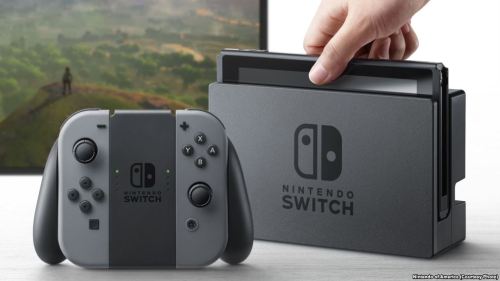Matt Hughes
Staff Writer

If there’s one thing I’ve discovered in my 21 years on this earth, it’s that I excel at going on nerd rants. Video games, comic books, movies, TV, whatever; I will rave and complain and theorize about them to whoever would listen to me. However, since I’m rapidly running down the list of people who will actually tolerate said rants, I thought it would be better to create a written column, so that everyone has to deal with them.
My current favorite subject to complain about is the exponentially decreasing amount of years between video game console generations, and how the dominant manufacturers in the industry are now once again expecting us to cough up another $400 for their shiny new models.
As the word “generation” implies, console manufacturers work in cycles, releasing their latest models in the same general time frame as their contemporaries, both to take advantage of new technology and possibly win over diehard fans of their competitors. However, the last three console cycles have been dominated by three major console manufacturers and game publishers: Microsoft, Sony, and Nintendo. Currently, we are in the eighth generation, which began in 2012 with the release of Nintendo’s Wii U, followed a year later by Microsoft’s Xbox One and Sony’s Playstation 4.
However, after only four years (compared to the typical six to seven year gap between previous generations), the major console manufacturers have all announced follow ups to their current offerings.
Why they’re doing this is simple: the full technical capabilities of the Xbox One and PS4 have already been reached. In previous console cycles, it would take years for developers to familiarize themselves enough with the machine’s architecture to get as much power as possible. Look at the graphical and gameplay differences in the launch titles of the original Xbox and PS2 and the games released near the end of their life cycles. The same can be said for the Xbox 360 and Playstation 3. The games that came out near the end of the console’s lifetimes, such as The Last of Us and Halo Reach, were the most critically-acclaimed and best-looking titles of the generation.
But for the Xbox One and PS4, there haven’t really been any great leaps in gameplay, physics or graphics quality since they first launched. This isn’t to say that the games released this year look no better than the ones released three years ago, but these are baby steps, rather than large strides. With previous generations, the leaps in processing power made it feel like the rulebook for how games played was torn up in favor of completely new and innovative systems. This time, it just feels like developers are still working within the same constraints they had five years ago.
This, in part, is due to current generation consoles having the same “x86” architecture as modern PCs, so that there isn’t really a learning curve with these machines. Current consoles speak the same language as the computers that they’re developed on. This might sound convenient, but it also means that there are no hidden depths left to explore. We’ve already seen the best games these two consoles have to offer, and their manufacturers realize this.
That’s why this year Microsoft announced the development of “Project Scorpio,” a follow up to the Xbox One with more than twice the amount of processing power as its predecessor with a planned 2017 release. Microsoft claims that it will be the most powerful gaming machine ever made. Sony is going a slightly different path, having recently announced the PS4 “Pro,” an upgraded version of the PS4 with a graphical processor that has twice the power of the older version, and the ability to play 4k videos and games at the cost of $400. The release date? Nov 10.
So does the ninth generation start this month? Does the “generation” model still exist, or will we start to see bi-yearly updates like Apple does with its iPhones? It’s hard to tell, but at the very least, the increased technical power should bring new innovations to the table.
I haven’t yet talked about what’s going on over at Nintendo. The Wii U, the eighth generation follow-up to the insanely successful Wii, was a complete flop. It has barely sold a third of Xbox and Playstation’s current sales to date, even though it had a full year’s head start on both. Nintendo has announced it will stop production of the Wii U later this year, in favor of a new console, the Switch.
Debuting in Spring 2017, the Switch is Nintendo’s attempt at a true hybrid console, something that many gamers (including myself) have dreamed about: a console that can be connected to your TV, but can also be be played on the go. The Switch’s multi-touch screen tablet can be taken off of its dock, and with two small controller attachments, can easily function as an HD mobile gaming device for the exact same games you could play at home. The concept is incredibly enticing, and Nintendo has promised that it will be able to compete on technical terms with its competitors. That said, they have yet to reveal the technical specifications of the Switch, or how much it will cost.
With this in mind, it will be interesting to see which company’s strategy will actually work out for them in the long run. I just hope we won’t be seeing even more powerful and expensive models from each manufacturer the year after next, because my wallet is under enough stress as it is.
Photo By Racquel Gonzales/ Foghorn

